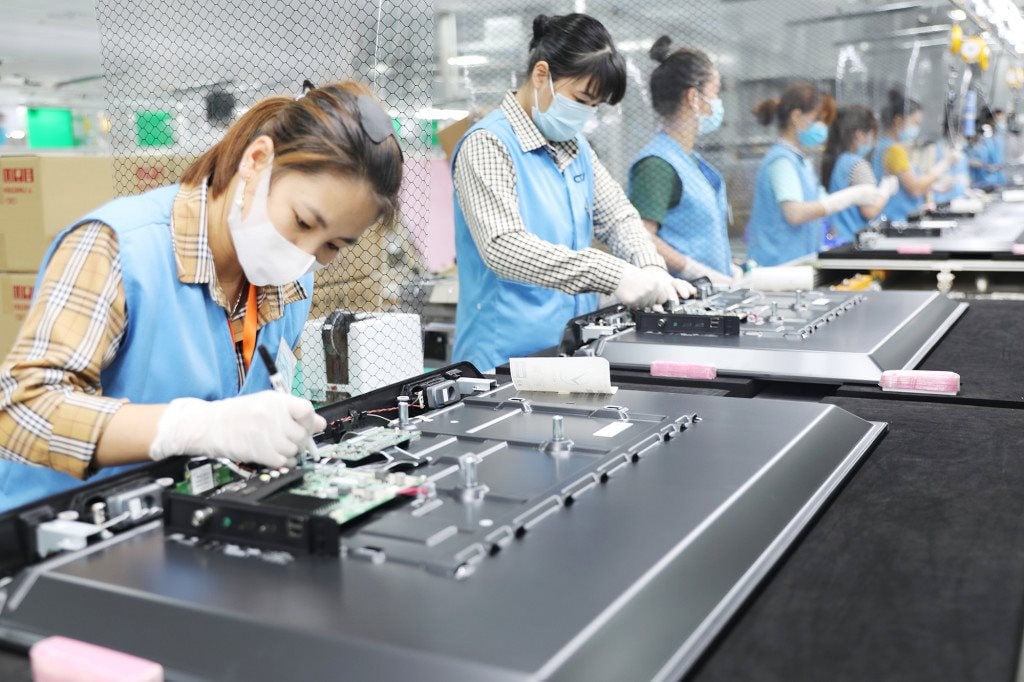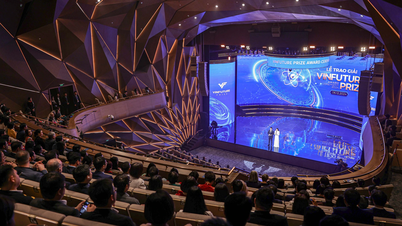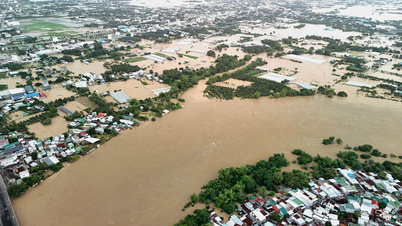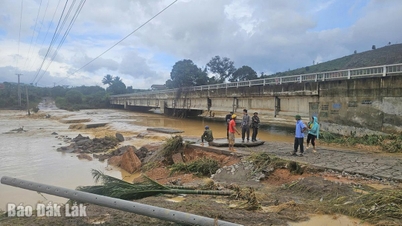It is necessary to amend the Law to meet development requirements.
The Law on High Technology, issued by the National Assembly in 2008, is the first and only law in Vietnam to comprehensively regulate the high technology sector. After 16 years of implementation, many provisions in the Law have revealed limitations, some provisions are not consistent with specialized laws, or are no longer suitable to socio- economic realities.
In the context of the rapidly developing digital economy, high technology and innovation, amending the Law is necessary to realize the spirit of Resolution No. 57-NQ/TW dated December 22, 2024 of the Politburo . The strategic goal of national development by 2045 is that Vietnam will have a digital economy scale reaching at least 50% of GDP, becoming a regional and world digital technology industry center, and among the top 30 countries in innovation and digital transformation. To achieve this, the Law must become a "creative" tool instead of just a management tool.
One of the important contents emphasized by National Assembly deputies and experts is that a good legal framework must go hand in hand with a coordination mechanism and specific resources. For example, regarding financial resources, the Law needs to clearly specify the decentralization, delegation of authority, and responsibilities of ministries, branches, and localities to avoid overlap and dispersion. Inter-sectoral coordination mechanisms and testing mechanisms (sandboxes) for new technologies must also be clearly designed to support innovative businesses.
Chairman of the Committee for Science, Technology and Environment Nguyen Thanh Hai emphasized: It is necessary to clarify the implementation resources and coordination mechanisms between agencies, and only apply incentives to enterprises that meet high-tech criteria. In particular, projects in ethnic minority, border and island areas need tax exemption and reduction policies, 0% interest rate support for digital infrastructure development, and land priority for high-tech zones.
Regarding research and development (R&D) activities, the Law needs to add incentives for core technology and open technology research, supported by the Science, Technology and Innovation Development Fund. At the same time, it is necessary to avoid duplication with budget regulations in the Law on Science, Technology and Innovation.

Create a strong enough legal corridor to break through technology.
Criteria and list of high technology need to be clear and quantitative.
Another important point is to establish measurement criteria for high-tech activities. Delegate Nguyen Tuan Anh (Can Tho delegation) noted that the current criteria are still general, it is necessary to add quantitative factors such as the number of patents, the level of value-added contribution, and the rate of high-quality human resources participating. This will help with transparency and make it easier to evaluate actual effectiveness.
In addition, the Law needs to develop a list of high-tech sectors that are prioritized for investment, as a basis for identifying industries that need support and technology transfer incentives, instead of depending entirely on detailed regulations of the Government later. This also helps businesses and investors easily determine development strategies.
In the workshops on the draft Law, many opinions said that the incentive mechanism and criteria for establishing high-tech zones, high-tech urban areas and high-tech agricultural zones are still general and not specifically quantified. This can easily create loopholes for policy exploitation. Therefore, it is extremely necessary to add quantitative criteria and attach them to security and safety requirements for enterprises, especially enterprises with foreign elements.
Another important aspect is the definition of concepts and terms. If concepts are not clearly defined, it will cause difficulties in the implementation process. The law needs to be easy to understand, consistent and consistent with international practices, so that management agencies, businesses and investors all have a solid legal basis.
One of the notable new points in the draft revised Law is the mechanism for capital contribution using technology. This is considered a solution to the problem of "freezing" intellectual property, allowing businesses to use know-how and technological solutions as investment capital. However, if the parties are allowed to determine the value of capital contribution themselves, it may lead to the risk of inflating the value, creating virtual capital and distorting the investment environment.
The Law on High Technology not only creates a favorable environment for the development and commercialization of high technology, but also nurtures high-quality human resources and forms an innovation ecosystem. This requires policies on training, attracting experts, incentives for research, and linkages between enterprises and universities and research organizations to be institutionalized in the Law or guiding decrees.
The synchronous coordination between the High Technology Law and policies on tax, land, finance, and business management is a key factor for the Law to become a tool to promote technological breakthroughs, instead of just an administrative management tool.
The revision of the Law on High Technology is no longer a theoretical issue, but an urgent requirement for Vietnam not to miss opportunities in the era of digital technology and innovation. A truly appropriate, transparent, stable and feasible Law on High Technology will help realize the vision by 2045: Becoming a leading country in the region in innovation, digital economic development and high technology.
This requires core points: A clear and transparent legal framework; specific incentive mechanisms; quantitative criteria; inter-sectoral coordination mechanisms; transparent valuation of technology-based capital contributions; along with policies for human resource development and an innovation ecosystem. If this is achieved, the High Technology Law will not only be a management tool, but also become a solid launching pad, creating technological breakthroughs and development opportunities for the entire economy.
Source: https://mst.gov.vn/tao-hanh-lang-phap-ly-du-manh-de-but-pha-cong-nghe-197251117151655602.htm



![[Photo] General Secretary To Lam and National Assembly Chairman Tran Thanh Man attend the 80th Anniversary of the Traditional Day of the Vietnamese Inspection Sector](https://vphoto.vietnam.vn/thumb/1200x675/vietnam/resource/IMAGE/2025/11/17/1763356362984_a2-bnd-7940-3561-jpg.webp)





























































































Comment (0)